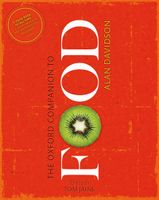Advertisement
Freeze-Drying
Appears in
Published 2014
This method can produce foods that are almost as well preserved as by straight freezing, but do not need cold storage. It exploits the fact that ice can ‘sublime’, or change straight from a solid to water vapour without passing through a liquid stage. (Sublimation is a familiar phenomenon in a home freezer: the frost that forms on the inside of bags of food comes from water vapour that has sublimed out of the food and then refrozen.)
Freeze-drying of a kind has been practised for centuries in cold, mountainous areas. If small pieces of food are left to freeze out of doors and hung up in the wind, the moisture will gradually sublime. The low air pressure at high altitude speeds the process. Products prepared in this way include chuño, the dried potatoes of the Andes; and freeze-dried tofu in Japan. (See also drying.)


